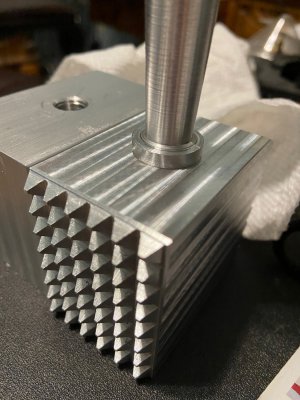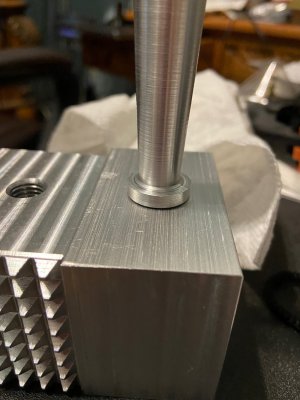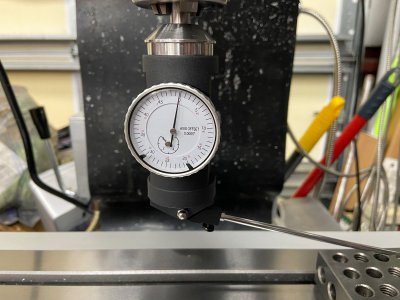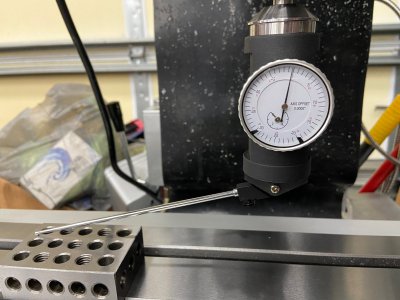Thread relief? When I screw the handle to the head I can see a gap on one side indicating the handle is not square to the head. When I screw the handle into the first mallet head I made, it is completely flush. This is what set me on the trail of the mill being out of tram.I agree. No way are the head threads that crooked. You tapped in the mill, right? Do you have a thread relief next to the flange on the handle?
Attachments
Last edited:





